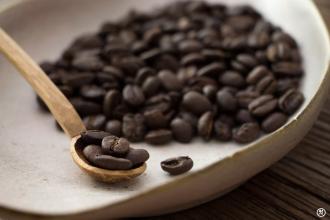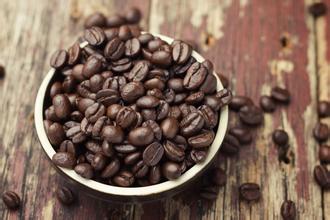Characteristics of Panamanian coffee beans roses summer coffee Panamanian coffee beans
The microclimate of the Panamanian highlands is the most important resource that makes Panamanian coffee unique. The most important resource that makes Panamanian coffee unique is its microclimate. Panama's east-west environment allows cold air currents to flow through the Central Mountains and converge above 6500 feet, thus creating a variety of microclimates in the Boquete and Volcán-Candela regions, making them the main producers of Panamanian coffee. These specialty coffees are grown on nutrient-rich, well-balanced soil in the Baru volcano region.
Chinese name Panama Coffee Country Home Panama Phaedra Sex coffee
planting environment
Panama is a small country located in the heart of the American continent. The waters of the Atlantic and Pacific oceans wash over its beaches.
Panama is located at 9 degrees north latitude, at the confluence of the Central Mountain Range, where Mount Baru, one of the highest volcanoes in Central America, is located.
With an elevation of more than 11,400 feet, the surrounding land is rich in nutrients and fertile soil, providing sufficient conditions for the planting and cultivation of Panamanian coffee.
These uplands have the right microclimate, soil, temperature and altitude for the planting, cultivation and harvesting of a wide variety of specialty coffees. These coffees have jasmine, citrus, ripe fruit, berry, caramel, special sweetness, vanilla, chocolate and many other flavors.
Unique coffee.
Panamanian coffee is sorted and numbered in small batches designed to be small in volume for optimal management, and the sorting number allows buyers to understand and track information throughout the process.
Due to its small volume, Panamanian coffee products are based on specialty coffee. The state supplies its quality products to specialty stores in countries around the world such as Denmark, England, Greece, Norway, Sweden, South Korea, Japan, China Taiwan Province and Emerald Manor Panama USA
Panama Geisha Hacienda La Esmeralda
In the early years, the identification of top coffee mostly followed Japan, while Geisha carried the hurricane power to sweep the coffee world. This coffee revolution was fierce, so that the king and queen ~ Jamaica Blue Mountain and Hawaii Kona, who had occupied the throne of coffee kingdom for a long time, also had to retreat. This wild variety originally originated in Ethiopia, after experiencing countless battles, is now valued in all major coffee producing areas, and its best spokesman is the "La Esmeralda" estate from Panama. Esmeralda Manor's Rosedale coffee is the most famous of the Rosedale varieties.
Panama Emerald Estate
Panama Emerald Estate
In 1924, the Swede Harns. Elliot founded the esmerada farm, which was not a coffee farm but a pasture, 40 years later in 1964. Mr. Bideson's grandfather, Ruth Loveau. M. bideson bought esmerada farm in order to retire and have a place to live, grandfather lut ruff. Born in Sweden, Mr. Bidesson was president of the Bank of America and director of the United Nations Development Programme.
His son Blais. Mr. bidazon moved from california to panama in 1973, inherited his father's farm, changed most of the farm to coffee cultivation in 1987, and purchased machinery for refining coffee in 1994 to create a brand investment. Mr. and Mrs. Bideson raised three children, Eligu (born Philadelphia, 1966), Richelieu (born Sweden, 1967) and Daniele (born Panama, 1974), while the coffee farm was established.
In 1996 Braith and Rachel visited a farm for sale in the Haramijon area of the Boketty Valley and were attracted by the beauty of the farm and immediately bought it. This is Esmeralda? Harami Jonon Farm, third son Danielle. Mr. Bideson planted the coffee world's attention in this farm-Geisha coffee!
Panama rose growing altitude: 1,500-1,650 meters, unique growth environment makes it unique flavor:
Dry fragrance: tea fragrance, flower fragrance (magnolia flower, tulip) vanilla plant, milk fragrance, brown sugar sweet, high champagne and aroma rise.
Wet fragrance: apricot, caramel, milk, flower fragrance.
Sip: Oil texture is good, delicate pear mountain special tea feeling, high-grade white wine astringent but immediately turned into a delicate smooth Body full of mouth.
Berry candy and spice sweet intertwining, accompanied by floral emission, full of floral aftertaste, sweet fruit and body is quite persistent, the lower the temperature, the more delicate the acid.
La Esmeralda has so far won 12 coffee competitions, three online open bids and three highest bids: $21 in 2004,$50.25 in 2006 and $130 in 2007! Of course, other countries have also bid a pound of good coffee close to 50 dollars (Brazil CoE champion Fazenda Santa Inês in 2005), El Injerto in 2008 Guatemala CoE champion 80.20 dollars; but you pay attention to the time point, that is, La Esmeralda bid record, before no bid price surpassed her, then, but she will surpass others, saying she is the record maker, no fluke!
Esmeralda Farm Glorious Experience
Panama's highest grade coffee ranked first for four consecutive years in 2004, 2005, 2006 and 2007!
SCAA World Coffee Cup ranking 2005, 2006, 2007 for 3 consecutive years No. 1!
Tropical Rainforest Conservation Group coffee quality cup test ranking 2004, 2006, 2007 No. 1!
Guatemala Summer Rose
Guatemala Acatenango Gesha.
In 2007, Guatemala added an eighth coffee-producing region,Acatenango Valley(R), which we translated as "Acatilan Fruit Region."
In 2007, Anacafé(Guatemala Coffee Association) not only promoted it at SCAA, but also organized a special presentation to international judges during the national competition. In the past, Guatemala claimed to have seven major producing areas, not only to distinguish characteristics, but also to let buyers and consumers good memories, 7 regions of Antigua, the slight plateau, Lake Attitan, Coban rainforest, etc., each area can find excellent manor and good coffee with local characteristics.
Acatenango is located in Chimaltenango province of Guatemala, where more than 5000 hectares of coffee plantations are fertile volcanoes, mainly located in two volcanic mountains, and almost all of them have forests and shade trees. As can be seen from the photos above, almost all of the estates are planted in shade, mainly bourbon and some Catuai and Caturra.
The two volcanoes of Acatenango are Volcan de Fuego and Volcan Acatenango. Acatenango is the third highest volcano in Central America, and beyond Fuego is the lake of Atlantis. Annual rainfall in this area is 48 to 72 inches, annual average temperature is 14 to 31 degrees C, temperature difference is large enough, so the bean density is tight, which is helpful for flavor. Coffee harvest season is mainly from mid January to March. Kaqchiquels still live in the area and maintain traditional farming methods; there are about 4,000 farmers in the area, and coffee cultivation dates back to 1880

Important Notice :
前街咖啡 FrontStreet Coffee has moved to new addredd:
FrontStreet Coffee Address: 315,Donghua East Road,GuangZhou
Tel:020 38364473
- Prev

The method of making fine coffee Blue Mountain Coffee which tastes better, Blue Mountain or Nestle Coffee?
Blue Mountain Coffee refers to coffee brewed from beans from the Blue Mountains of Jamaica. According to the grade, it is divided into Jamaica Blue Mountain Coffee and Jamaican Alpine Coffee. The Blue Mountains are located in the east of the island of Jamaica (Jamaica). Because the mountain is surrounded by the Caribbean Sea, whenever the weather is clear, the sun shines directly on the blue sea, and the peaks reflect the bright blue light of the sea.
- Next

Boutique coffee Panamanian coffee jade manor Panamanian rosy summer coffee
The microclimate of the Panamanian highlands is the most important resource that makes Panamanian coffee unique. The most important resource that makes Panamanian coffee unique is its microclimate. The east-west environment of the Republic of Panama allows cold air to flow through the Central Mountains and converge above 6500 feet, creating a variety of microclimates in the Boquete and Volcn Candela regions.
Related
- Does Rose Summer choose Blue, Green or Red? Detailed explanation of Rose Summer Coffee plots and Classification in Panamanian Jade Manor
- What is the difference between the origin, producing area, processing plant, cooperative and manor of coffee beans?
- How fine does the espresso powder fit? how to grind the espresso?
- Sca coffee roasting degree color card coffee roasting degree 8 roasting color values what do you mean?
- The practice of lattes: how to make lattes at home
- Introduction to Indonesian Fine Coffee beans-- Java Coffee producing area of Indonesian Arabica Coffee
- How much will the flavor of light and medium roasted rose summer be expressed? What baking level is rose summer suitable for?
- Introduction to the characteristics of washing, sun-drying or wet-planing coffee commonly used in Mantenin, Indonesia
- Price characteristics of Arabica Coffee Bean Starbucks introduction to Manning Coffee Bean Taste producing area Variety Manor
- What is the authentic Yega flavor? What are the flavor characteristics of the really excellent Yejasuffi coffee beans?

